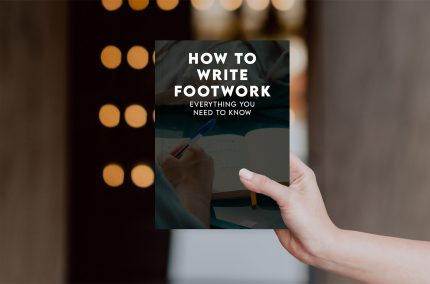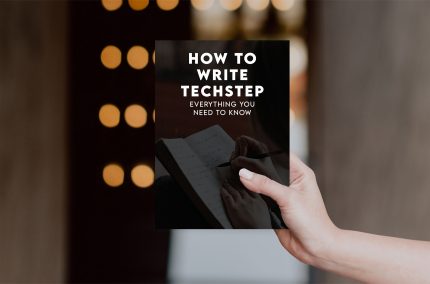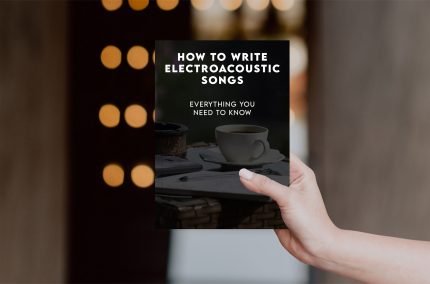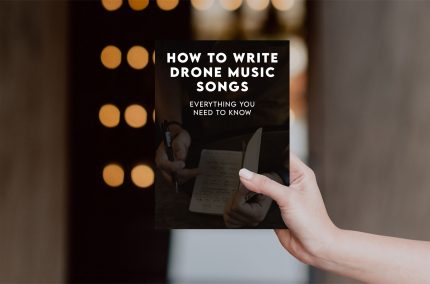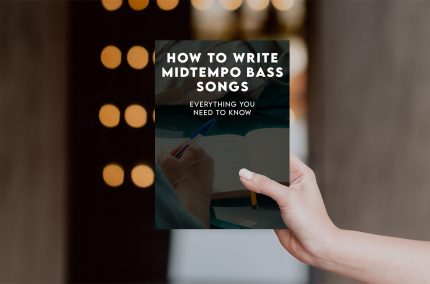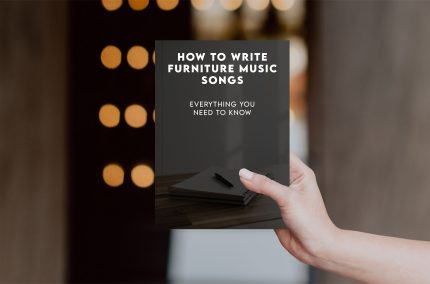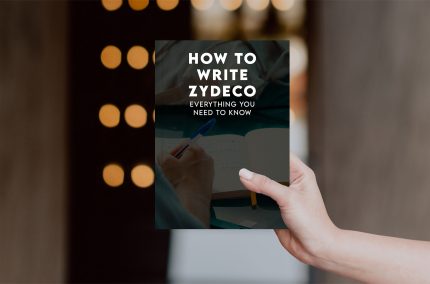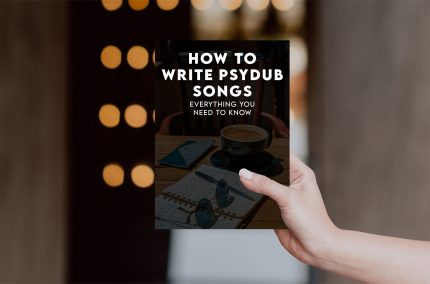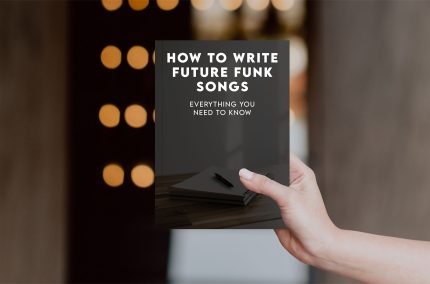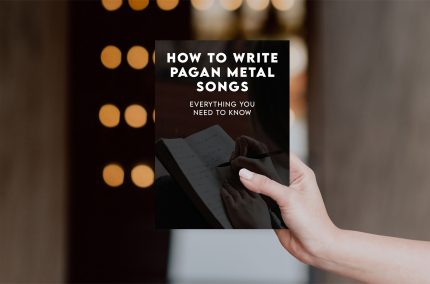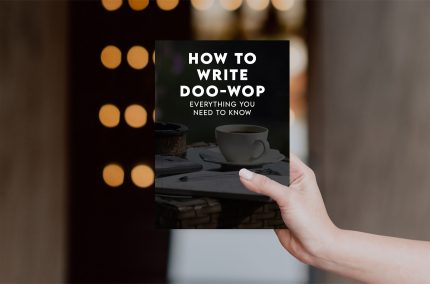- Your cart can only contain one of the specific products.
How to Write Footwork Songs eBook (Instant Download)
- Melody writing that respects your range
- Structures that carry emotion without padding
- Revisions that keep truth and drop filler
- Imagery and objects that beat vague angst
- Simple release plans you’ll actually follow
- Turning messy feelings into singable lines
- Artists who want repeatable, pro‑feeling results without losing soul
- Templates
- Prompt decks
- Tone sliders
- Troubleshooting guides
How to Write Techstep Songs eBook (Instant Download)
- Melody writing that respects your range
- Structures that carry emotion without padding
- Simple release plans you’ll actually follow
- Revisions that keep truth and drop filler
- Imagery and objects that beat vague angst
- Turning messy feelings into singable lines
- Artists who want repeatable, pro‑feeling results without losing soul Results you can repeat. What you get
- Prompt decks
- Tone sliders
- Templates
- Troubleshooting guides
How to Write Electroacoustic Songs eBook (Instant Download)
- Editing passes, truth stays, filler goes
- Prosody: melody shapes that fit your vowels
- Guitar/piano patterns that support the story
- Finding voice: POV, distance, and honesty with boundaries
- Objects > feelings, imagery that carries weight
- Release cadence: singles, EPs, and live takes
- Writers who want raw feeling with modern clarity
- Object prompt decks
- Tone sliders from tender to wry
- Anti‑cringe checklist
- Verse/chorus blueprints
How to Write Drone Music Songs eBook (Instant Download)
- Concept > gimmick: building a system that generates surprises
- Graphic scores and performer freedom that still feels intentional
- Micro‑form: gestures, cells, and contrast without verse/chorus
- Text strategies: cut‑ups, constraints, and semantic drift
- Timbre first writing, preparing instruments and designing noise
- Recording wild sounds safely and integrating them musically
- Artists pushing limits, noise-makers, art‑pop rebels, theatre composers
- Graphic score stencils
- Session routing blueprints
- Constraint cards
- Consent & safety notes for extreme sounds
How to Write Midtempo Bass Songs eBook (Instant Download)
- Turning messy feelings into singable lines
- Revisions that keep truth and drop filler
- Imagery and objects that beat vague angst
- Melody writing that respects your range
- Simple release plans you’ll actually follow
- Structures that carry emotion without padding
- Artists who want repeatable, pro‑feeling results without losing soul
- Templates
- Troubleshooting guides
- Prompt decks
- Tone sliders
How to Write Furniture Music Songs eBook (Instant Download)
- Lyric minimalism or instrumentals that still feel human
- Chord colours that soothe without boredom
- Motif rotation for long cues and playlists
- Mix moves for cafes, lobbies, and streams
- Texture swaps, not big drops, arrangement for ambience
- Writing music that supports spaces without stealing focus
- Composers and artists aiming for sync, retail, and hospitality playlists
- Loop/export settings
- Palette swatches
- Client brief translator
- Cue templates
How to Write Zydeco Songs eBook (Instant Download)
- Imagery and objects that beat vague angst
- Structures that carry emotion without padding
- Turning messy feelings into singable lines
- Simple release plans you’ll actually follow
- Melody writing that respects your range
- Revisions that keep truth and drop filler
- Artists who want repeatable, pro‑feeling results without losing soul Results you can repeat. What you get
- Tone sliders
- Prompt decks
- Templates
- Troubleshooting guides
How to Write Psydub Songs eBook (Instant Download)
- Revisions that keep truth and drop filler
- Imagery and objects that beat vague angst
- Structures that carry emotion without padding
- Turning messy feelings into singable lines
- Simple release plans you’ll actually follow
- Melody writing that respects your range
- Artists who want repeatable, pro‑feeling results without losing soul
- Tone sliders
- Templates
- Troubleshooting guides
- Prompt decks
How to Write Future Funk Songs eBook (Instant Download)
Flip boogie and city pop into glittering dance fuel. Chop hooks with taste, write new toplines that cruise, and build drops that feel like champagne. Keep bass bouncy, chords silky, and drums friendly for DJs. Deliver groove forward songs that stream bright and crush live.
- Sample curation and clearing paths with ethical options
- Chop grids, swing placement, and vocal slice melodies
- Bass and guitar rhythm patterns that smile on beat one
- Keys and brass voicings for glossy lift without clutter
- Arrangement tags for intros, loops, and second drops
You get: Chop kits, hook formulas, patch presets, and DJ edit templates. Outcome: Feel good bangers with instant replay gravity.
How to Write Pagan Metal Songs eBook (Instant Download)
Forge epics that honor myth, land, and ritual. Blend folk instruments with heavy rhythm sections and choir ready chants. Shape long forms that feel like journeys through forest and fire. Keep riffs savage and melodies ancient.
- Modal palettes, drones, and folk scales with iron rhythm
- Story arcs for rites, seasons, and battles
- Instrumentation plans for whistles, bouzoukis, and war drums
- Chant hooks and call responses that raise fists
- Production tactics for wide vistas and tight bite
You get: Lore prompts, tuning guides, orchestration sheets, and stagecraft cues. Outcome: Anthems that feel like stone circles under storm clouds.
How to Write Doo-Wop Songs eBook (Instant Download)
- Turning messy feelings into singable lines
- Melody writing that respects your range
- Structures that carry emotion without padding
- Simple release plans you’ll actually follow
- Revisions that keep truth and drop filler
- Imagery and objects that beat vague angst
- Artists who want repeatable, pro‑feeling results without losing soul Results you can repeat. What you get
- Troubleshooting guides
- Tone sliders
- Prompt decks
- Templates

